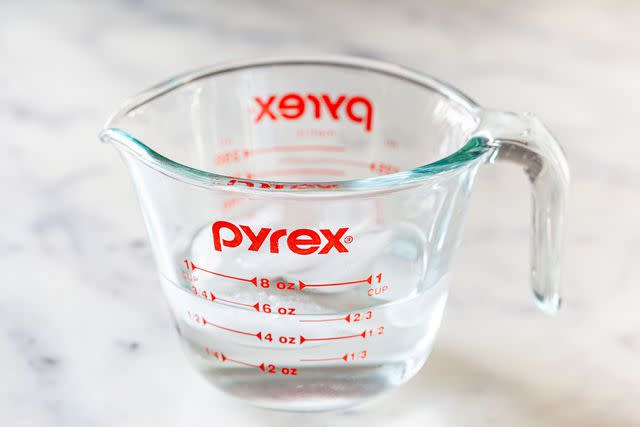The Actual Difference Between PYREX and pyrex
A food editor explains the difference between PYREX with capital letters and pyrex with lowercase letters.

Simply Recipes / Wanda Abraham
A Pyrex liquid measuring cup was one of the things I bought when I stocked my very first kitchen way back when. It stayed with me through my 20s and 30s—college, new jobs, cross-country moves, marriage, and beyond. Only last year did I finally replace it when the red measured markings had faded so much that they were no longer legible.
The Pyrex glass measuring cup is a staple in my kitchen, as it is for so many cooks. Beyond that, I use Pyrex casserole dishes, loaf pans, and pie pans often. I never paid much attention to the Pyrex logo, though, until I had to replace that measuring cup. While shopping around, I learned that there is a difference between PYREX with capital letters and pyrex with lowercase letters. I was as surprised as you might be—here are the differences.

Simply Recipes / Sally Vargas
What Is the Difference Between PYREX and pyrex?
Corning invented the brand Pyrex in 1915 and made all Pyrex products with borosilicate glass. This type of glass has an element called boron trioxide in it, which makes it highly resistant to major temperature changes, reducing the risk of it breaking.
Read More: Why Does Pyrex Explode, Anyway?
Historically, Corning owned the trademark to the PYREX and pyrex logos and they were used interchangeably on all Pyrex branded products. Corning later licensed the use of the names PYREX and pyrex to two different companies who now produce the glass cookware.
You’ll now find cooking products labeled PYREX in Europe, Africa, and the Middle East, where they are still made with borosilicate glass. The label pyrex stayed stateside, and in the rest of North America, South America, and Asia, and the company that makes them no longer uses borosilicate glass. Instead, they are made with tempered soda-lime glass, which is heated and cooled in a manner that makes it more durable than regular glass under temperature fluctuations. While it’s still heat-resistant, it’s not quite as heat-resistant as borosilicate glass.
PYREX vs. pyrex: Which Is Safer?
Since PYREX is made with borosilicate glass, it is more heat-resistant and therefore less prone to breaking due to any sudden changes of temperature such as transferring a casserole from the refrigerator directly to the oven. That makes PYREX cookware safer than pyrex cookware, which runs a higher risk of exploding due to thermal shock—when the glass goes through an extreme temperature change that can cause it to fracture.
It's important to note that neither are 100% resistant to thermal shock.
How To Use Pyrex Cookware Safely
No matter if you own PYREX or pyrex cookware, it's important to care for them properly so that they don’t break. Follow these easy guidelines and Pyrex will be a long-lasting and safe staple in your kitchen for years to come.
Always avoid sudden drastic changes in temperature. Don’t pour boiling liquid into it. Let it cool down after pulling it from the oven before running cold water over it in the kitchen sink. Don’t put frozen or refrigerated casseroles or pies straight from the freezer into a hot oven and don’t put your cookware directly under the broiler. Also, store the baking dishes carefully to prevent microcracks in the glass, which can weaken them.
Read the original article on SIMPLYRECIPES


